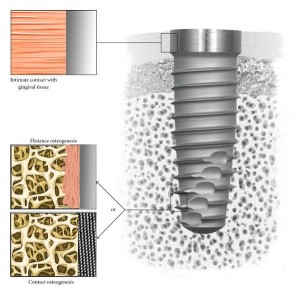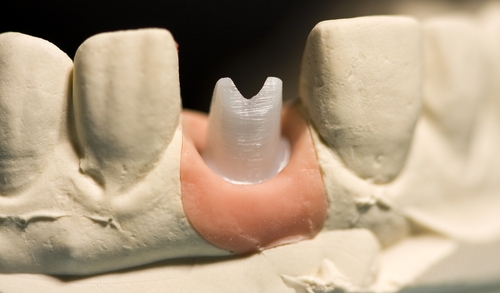Dental Tourism News – If you have missing teeth there are different dental procedures you can choose from like dentures, crowns and bridges to get them replaced. However, the most effective and lasting dental procedure available in the market today is dental implant which is an artificial tooth root made of titanium or titanium alloy that is embedded in the jaw to provide a strong foundation for fixed and removable replacement teeth.
 Currently the success rate of dental implants is at 98 per cent and the 2 per cent failure is caused by bacterial infection and unsuccessful osseointegration or failure of the bone to meld with the titanium implant. Imagine the agony of going thru the operation and spending $2000-$4000 on a procedure that is not covered by insurance then in the end find out that it needs to be removed.
Currently the success rate of dental implants is at 98 per cent and the 2 per cent failure is caused by bacterial infection and unsuccessful osseointegration or failure of the bone to meld with the titanium implant. Imagine the agony of going thru the operation and spending $2000-$4000 on a procedure that is not covered by insurance then in the end find out that it needs to be removed.
The 2 per cent failure rate may seem trivial but for Tolou Shokuhfar, a scientist at Michigan Technological University and an assistant professor of mechanical engineering, this is unacceptable and wants to increase the success rate to a hundred per cent by using nanotechnology or to be more precise a nano-material that can fight infection, improve healing, and make dental implants last a lifetime: titanium dioxide nanotubes.
According to Shokuhfar’s associate Cortino Sukotjo, a clinical assistant professor at the University of Illinois at Chicago (UIC) College of Dentistry, a dental implant with a surface made from TiO2 nanotubes encourages cell growth that can greatly help in keeping dental implants in place. Aside from promoting cell growth, nanotubes can also be used as a drug delivery system. TiO2 or titanium dioxide nanotubes can be loaded with the anti-inflammatory drug sodium naproxen which can be gradually released to the patient’s gums.
Nanotube laced with silver nanoparticles is now also being researched by Shokuhfar and Craig Friedrich, who holds the Richard and Bonnie Robbins Chair of Sustainable Design and Manufacturing at Michigan Tech. Shokuhfar said: “Silver has antimicrobial properties, and we are capable of obtaining a dose that can kill microbes but would not hurt healthy cells and tissues.”
Shokuhfar and Friedrich are now coordinating and working together with two hospitals to develop the technology and get the TiO2 licensed. Shokuhfar said: “Yes, the surface consists of nanotubes, but basically nanotubes are just a thicker form of the native oxide, which is the same as the white pigment that you find everywhere: in food, toothpaste, cosmetics, multivitamin and multimineral supplements, paints—all kinds of products.” She went on and added, “What we’re developing is a surface that’s inexpensive and easy to make and which can speed healing in so many ways… It can fight infection by adding antimicrobial silver and reduce inflammation by adding sodium naproxen. It’s also likely that we could promote healing even more by incorporating a growth factor into the TiO2 nanotubes.”
With the TiO2 technology people can expect a hundred per cent success rate when they undergo dental implant and get the most out of their hard earned money.
Click Here to Get Your FREE Costa Rica Dental E-BOOK.
There is a lot of information to digest when it comes to preparing for your dental vacation to Costa Rica. Entry requirements to Costa Rica, how to find a dentist or dental clinic, what to expect for your specific procedure ( dental implants, porcelain veneers, crowns and bridges, full mouth restorations and much more) and so much more.
The Medical Tourism & Travel Guide Offers a Free E-Book to answer all your questions.

